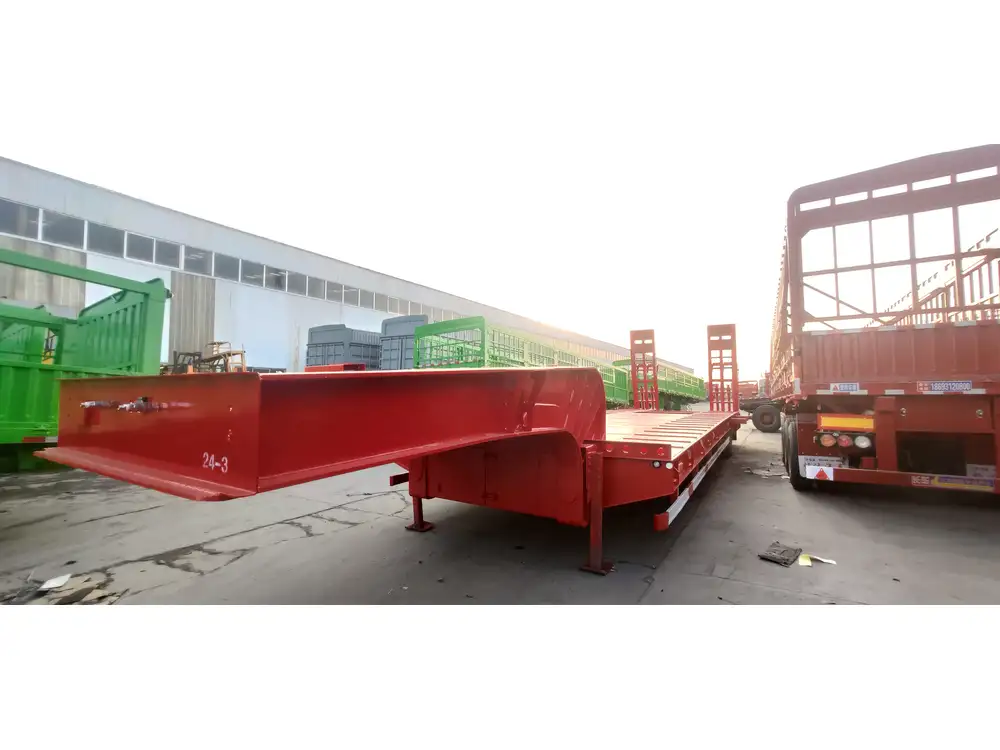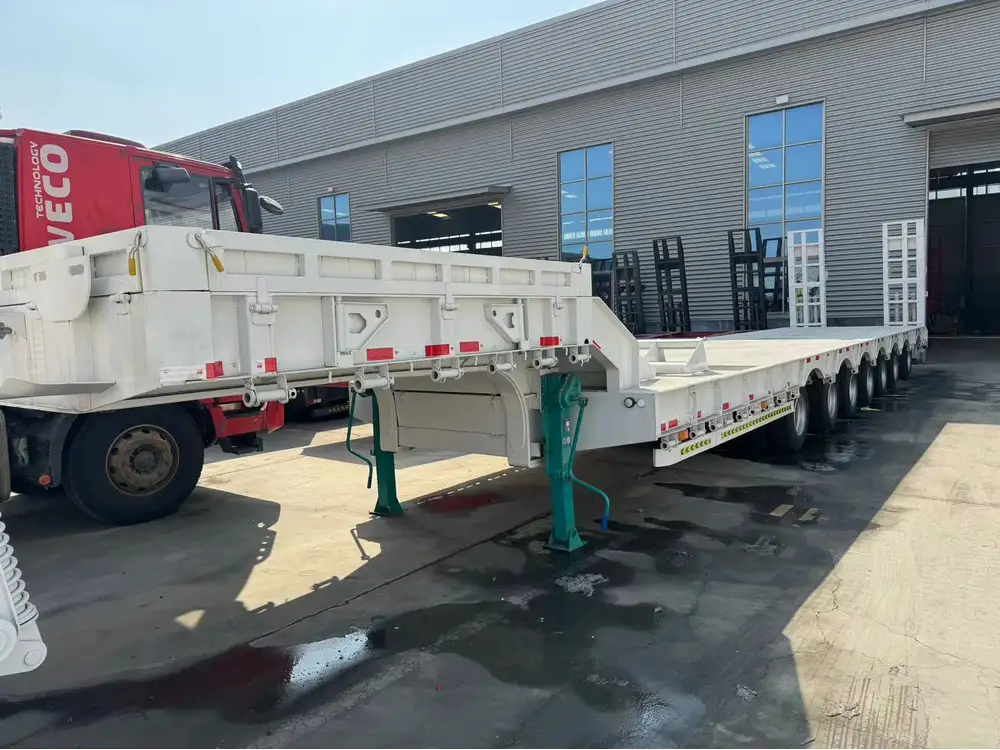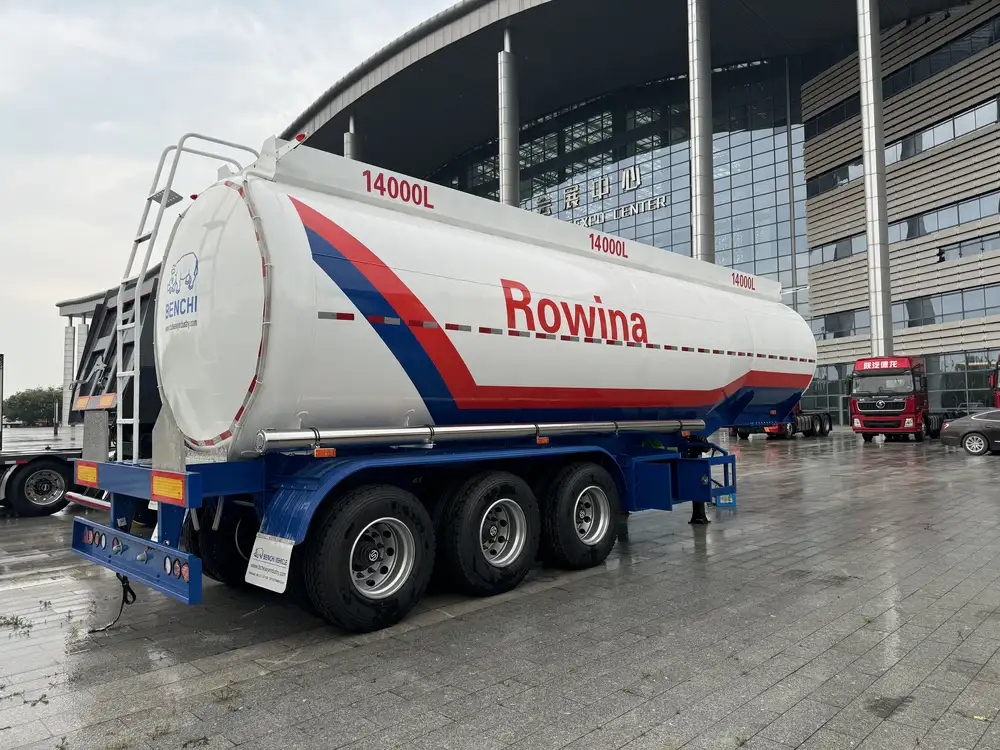Introduction to Air Brake Systems in Semi-Trailers
In the world of heavy-duty trucking, safety is paramount. One critical component that ensures safe operation is the air brake system, particularly the air brake lever in semi-trailers. This article will delve into the intricacies of trailer air brake systems, focusing on the operation, maintenance, and troubleshooting of trailer air brake levers, while also addressing common user issues and questions.
Components of the Air Brake System
To understand how the air brake lever functions within a semi-trailer, it is important to first comprehend the entire air brake system. Below is a breakdown of the key components involved:
| Component | Description |
|---|---|
| Air Compressor | Generates compressed air to power the braking system. |
| Air Reservoirs | Store compressed air for immediate and future use. |
| Brake Chambers | Convert air pressure into mechanical force to activate brakes. |
| Brake Shoes/Pads | Press against the brake drum or disc to slow the vehicle. |
| Air Brake Lever | Allows the driver to control the braking system manually. |
| Valves | Distribute air throughout the system, including cut-off and relay valves. |
Each of these components must work harmoniously for the air brake system to function optimally, with the air brake lever acting as the driver’s primary interface.

Functionality of the Air Brake Lever
The air brake lever in a semi-trailer is a pivotal control device. It serves as the main input for the driver, allowing them to engage or disengage the braking mechanism of the trailer. Typically located within easy reach of the driver, the air brake lever can be found in various configurations depending on the trailer design. This lever functions via pneumatic signals, manipulating airflow to the brake chambers.
Lever Mechanism
When the driver pulls the air brake lever, a series of actions unfold:
- Pneumatic Activation: The lever triggers a pneumatic signal that initiates air flow from the reservoir to the brake chambers.
- Pressurization: Air pressure builds within the brake chambers, causing diaphragm movement that engages the brake pads against the drum or disc.
- Braking Action: The friction created by the contact of the brake pads with the rotating element leads to a deceleration of the trailer.
- Release Mechanism: Releasing the lever results in a drop of air pressure, retracting the brake pads and allowing the wheels to spin freely.
Importance of Proper Lever Operation
Operating the trailer air brake lever properly is of utmost importance. Ineffective use can lead to several issues:
- Safety Hazards: Incorrect application can lead to skidding or loss of control.
- Brake Wear: Frequent misuse may accelerate braking component degradation.
- Regulatory Issues: Failing to adhere to proper operational protocols can result in legal ramifications.

Common Issues with Air Brake Levers
Understanding potential issues can help users troubleshoot effectively. Here is a list of common problems associated with the trailer air brake lever:
| Problem | Potential Cause | Recommended Solution |
|---|---|---|
| Lever Not Engaging | Air leaks or insufficient pressure | Inspect air lines and connections |
| Brake Drags | Misaligned brake pads | Adjust or replace brake components |
| Lever Sticking | Dirt/dust accumulation or corrosion | Clean and lubricate the lever mechanism |
| Excessive Travel | Worn components or incorrect adjustment | Check clearance and adjust accordingly |
Diagnosing Common Issues
1. Lever Not Engaging
If the trailer air brake lever fails to engage brakes, it may signal an underlying air leak. Users should inspect the air lines for any signs of damage or disconnection. Checking the air compressor output can also reveal if appropriate pressure is being generated.

2. Brake Drags
Should the trailer experience drag while moving, this could derive from misalignment in the brake pads. Regular inspection and adjustment can ensure that the brakes operate smoothly and effectively.
3. Lever Sticking
A sticking lever can indicate that it hasn’t been maintained properly. Dirt and dust build-up can significantly hinder performance. Regular cleaning and correct lubrication are essential for maintaining lever function.
4. Excessive Travel
An unusually long travel distance for the brake lever may point to worn components. This situation requires inspection of the brake adjustment systems to restore optimal function.

Maintenance Strategies for the Air Brake Lever
Regular Inspections
A systematic approach to maintaining your trailer’s air brake systems can mitigate most issues. Establish a routine inspection schedule, ensuring that every part of the braking system undergoes examination. Focus on checking:
- Air lines and fittings: Look for cracks, wear, and secure fittings.
- Brake chambers: Inspect for any signs of air leakage.
- Lever functionality: Ensure the lever engages and releases smoothly.
Cleaning and Lubrication
Regular cleaning and lubrication of the air brake lever can enhance its lifespan and effectiveness. Use appropriate lubricants that do not attract dirt and ensure all moving parts function seamlessly.

Tuning and Adjusting
Keep an eye on the adjustments of the brake pads and lever travel. Specifically, routinely check the clearance between the brake shoes and drum, which can change due to wear over time. Correct adjustments are vital for maintaining efficient braking performance.
Troubleshooting with a Checklist
When addressing potential issues with the air brake lever, it can be helpful to follow a structured checklist:
Check for Air Leaks
- Inspect air lines and connections visually.
- Listen for hissing sounds near the brake system.
Test Lever Functionality
- Pull the lever and observe if brakes engage properly.
- Ensure the lever returns smoothly to its original position.
Inspect Brake Chambers
- Look for physical damage or corrosion.
- Verify the diaphragm’s response to air pressure.
Review Maintenance History
- Assess previous maintenance records to evaluate the frequency of service.
Seek Professional Aid
- If problems persist, consult with a certified technician for in-depth diagnosis and repair.
Conclusion
The trailer air brake lever is a crucial aspect of semi-trailer operation, providing both safety and control. Understanding its function, maintenance needs, and common issues is essential for truck operators. Regular inspections, timely repairs, and vigilant operations will ensure that the air brake systems perform reliably, keeping you and others on the road safe. Investing time into mastering the functioning and care of the air brake lever can lead to a significantly improved operational experience and reduced likelihood of serious incidents.
By adopting a proactive approach to air brake system maintenance, users not only enhance vehicle performance but also contribute to a culture of safety on highways. As a manufacturer of semi-trailers, prioritizing the quality and reliability of braking systems is paramount. Ensure you make informed decisions while considering the air brake lever as a vital component in your safety arsenal.



